#armadillosuchus
Text
Prehistoric Planet Croc Ideas
So this was a thing I did on Twitter in anticipation of Prehistoric Planet. Obviously crocs (in this case meaning crocodylomorphs) were a pretty massive part of earth's fauna during the late Cretaceous, and seeing as the first season featured NONE I came to speculate which taxa could hypothetically make an appearance.
Now part of the challenge for myself was to come up with a new, interesting contender every day in anticipation of the show's release, each based around the confirmed episides we had and restricted purely to taxa from the Campanian and Maastrichtian. While it took a lot of energy, I did manage to do so. Hell, halfway through they dropped the reveal of Simosuchus, which I had saved for later.
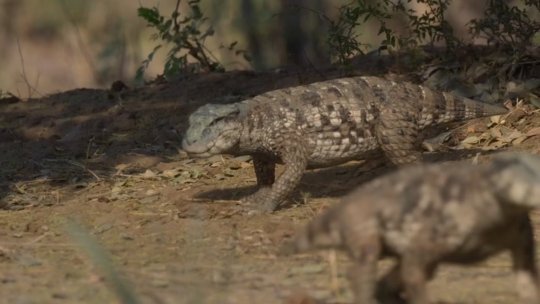
Obviously we didn't get much still, but I'll regardless post my list of candidates and ideas here, perhaps third time's the charme for a lot of these (tho for convenience I'm still ordering them by S2s episode titles). I'll also try to break them apart roughly by biome, starting with islands.
PS: I'd love to hear which crocs people would have loved to see themselves. Any on this list or stuff I didn't even mention? Let me know I'm curious.

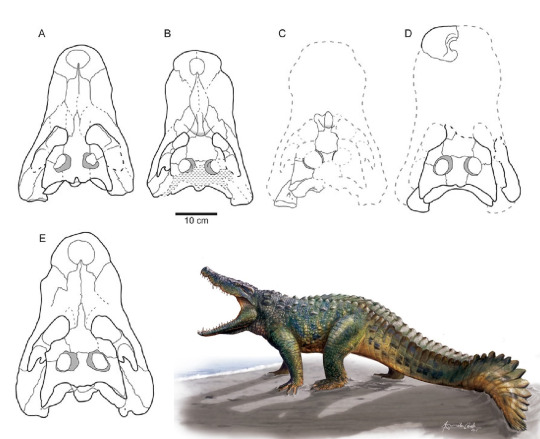

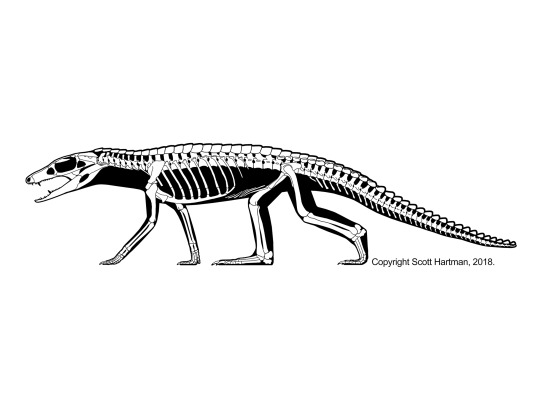

We got a shit ton of island crocs from the Cretaceous actually, which you can broadly divide into two categories.
The crocodiles of the European archipelago as seen in the top row.
Featuring the small, possibly shellfish eating Acynodon (art by Adramelech89), the incredibly widespread Allodaposuchus which did have some possibly semi-terrestrial forms (art by Alejandro Blanco, Aina and Agnès Amblás) and Aprosuchus, a tiny terrestrial critter from Hateg (art by @knuppitalism-with-ue). They already give a nice diversity between tiny durophages with blunt snouts, large, more traditional crocs and lanky land species.
The other island category concerns Madagascar, which had a lot of attention in season 2. Discounting Simosuchus, we got Araripesuchus tsangatsangana (art by Scott Hartman) and Mahajangasuchus (art by Mark Hallet). Both are really cool. The former is yet another smaller terrestrial species that may not actually be part of Araripesuchus, while the later is a massive, 4 meter relative of the famous Kaprosuchus that took to the water independently from all other crocs and has been nicknamed "Hippo croc" for its weird skull. Really I'd have loved to seen an episode entirely dedicated to this place.
Next up we had the badlands episode, which oh boy has a lot of contenders from the clade Notosuchia. Brace yourself.
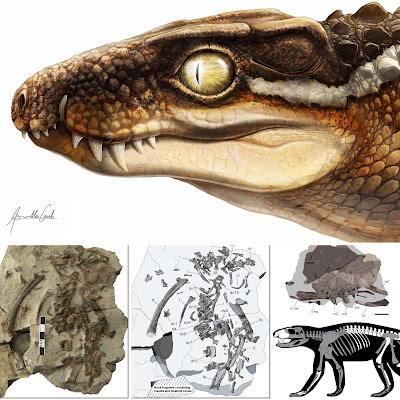


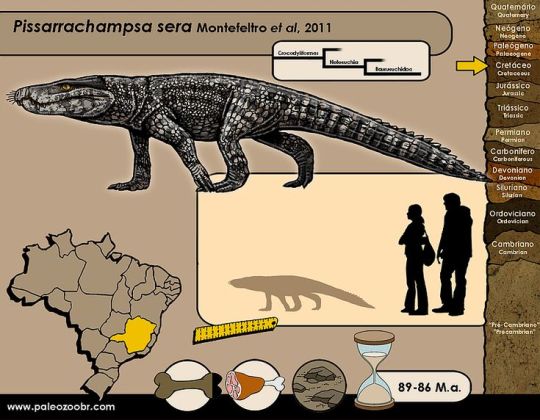


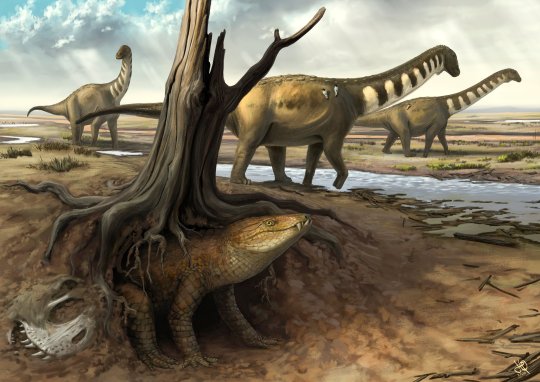

Here again I could split these in two categories.
The first is just general badland taxa. There's Ogresuchus for example, from Spain's Tremp Formation (art by Aina and Agnès Amblás). A relatively small sebecid found in a sauropod nesting site. And we all know what PhP does with baby sauropods. Or the long-necked Gobiosuchus (art by @yoofilos) from Mongolia, which may look like its related to the other ones in this category but actually is a far more ancient type of croc.
The far bigger group concerns South America's Notosuchians. ALL OF THESE are from the Bauru Group, with some even from the same single formation. You got Stratiotosuchus (again by Joschua Knüppe), a large terrestrial baurusuchid that filled the nische of mid sized carnivore in an environment shared by sauropods and abelisaurs. There's Pissarrachampsa (by Felipe Alves Elias), another baurusuchid I decided to feature because we have evidence of a nesting site that shows they only had few eggs. A great opportunity to show their tender side. Uberabasuchus (justin_an74), part of the bizzarly proportioned peirosaurids. Adamantinasuchus (by Deverson da Silva), a small, lanky Notosuchian and of course the heavily armored omnivore Armadillosuchus (by the ever talented Júlia d'Oliveira). Hell you could do a full episode just on the foodweb of the Bauru Group (Godoy et al. 2014).
Then there's swamps, which I'll just use to dump all the crocs that don't fit into the other categories.
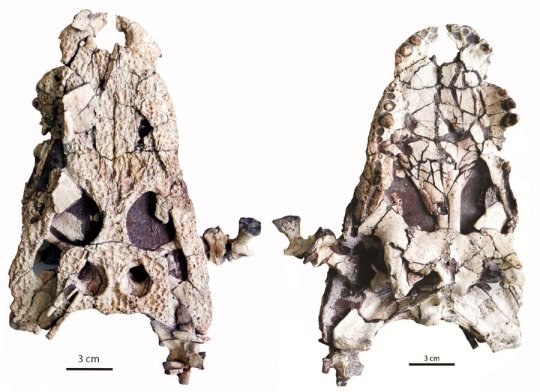


As you'd expect, freshwater would be ideal for crocs with a more traditional semi-aquatic lifestyle, here represented by three forms. Jiangxisuchus (image by Li et al. 2014) is a paralligatorid, which are tiny crocodilians from the Cretaceous and Paleogene of east Asia. We honestly don't know what they are, some say alligator relatives, others say they are closer to crocs. But its small and cute. Then there's Roxochampsa (artist of the model I couldn't find), which looks suspiciously crocodilian but is actually a relative of Uberabasuchus from the badlands, hell it appeared in the same formation. Still, I reasoned that I'd throw it into this category because I already proposed so much for badlands (none of which came true but hey). And then there's Denazinosuchus (art by Andrey Atuchin). Again it looks deceptively like a modern croc, but is actually the last remnant of the goniopholids, crocodyliforms that were prominent animals in the Jurassic and early Cretaceous. It could have brought both taxonomic diversity nad highlighted croc resilience till the end.
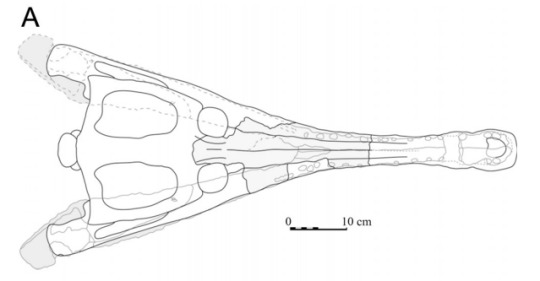

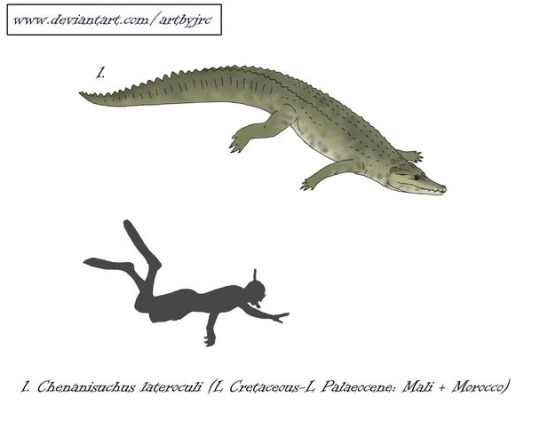
When it came to picking out crocs for Oceans, it got tricky. Obviously season 2 tried to differentiate itself by being set more in the open ocean, not the coast, and true pelagic crocodiles weren't around by the end of the Cretaceous. So I had to settle for coastal animals. There's Sabinosuchus (Schiller II et al. 2016), a cousin to Sarcosuchus and, like Denazinosuchus, one of the last of its lineage. Also its from Mexico which is rarely talked about for its fossils. Rhabdognathus (Ghedoghedo) is a distant cousin, a slender snouted dyrosaur. Unlike pholidosaurs, dyrosaurs actually did really well after the KPG impact and spread around a lot, living way into the Eocene. And finally Chenanisuchus (art by artbyjrc), which like Rhabdognathus was found both before and after the impact that killed the dinosaurs.

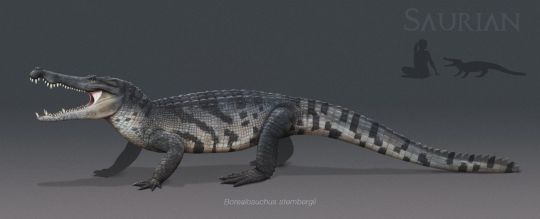
And the final two I shall talk about, both of which I thought/hoped would appear in the North America episode. Again, there's certainly overlap, both would have just as much fit into swamps, while many others would have also suited North America. Regardless, here's Brachychampsa (Tom Parker) and Borealosuchus (Chris Masna), both iconic animals from the Hell Creek Formation. One closely allied with alligators and caimans, the other more basal with a head-shape more similar to todays crocodiles.
Now obviously there'd have been a lot more. Part of the challenge to myself was to try and be as diverse as possible, rather than just listing 10 different baurusuchids I went with only two, tried to include as much of the world as possible, etc.... There's also the fact that some really awesome taxa, Titanochampsa, Brachiosuchus and Eurycephalosuchus, all incredibly unique or interesting, were published too late to have been considered for the show.
And now, in hinsight, we obviously know that with the exception of Simosuchus none of them made it in. Which is a shame, but maybe next time.
#prehistory#palaeblr#crocodile#paleontology#long post#prehistoric planet#prehistoric planet 2#borealosuchus#brachychampsa#simosuchus#pissarrachampsa#stratiotosuchus#gobiosuchus#ogresuchus#uberabasuchus#roxochampsa#armadillosuchus#adamantinasuchus#jiangxisuchus#denazinosuchus#sabinosuchus#rhabdognathus#chenanisuchus#mahajangasuchus#araripesuchus#acynodon#allodaposuchus#aprosuchus
157 notes
·
View notes
Text
(Plz read my pinned b4 interacting, and reblog for larger sample size)
8 notes
·
View notes
Photo
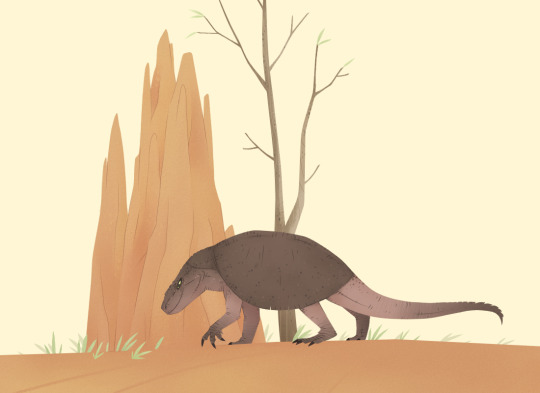
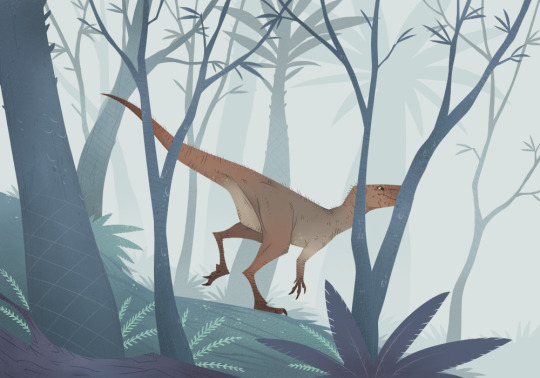

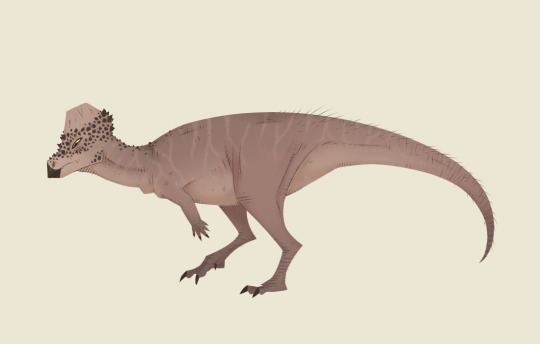
Inktober days 21-24
Treasure: Armadillosuchus
Ghost: Chindesaurus
Ancient: Chiniquodon and Anteosaurus fossil
Dizzy: Pachycephalosaurus
#art#my art#digital art#paleoart#sciart#dinosaur#armadillosuchus#chindesaurus#chiniquodon#pachycephalosaurus#inktober#inktober2019
929 notes
·
View notes
Text
I have like a thing where like, I gravitate towards random shit and suddenly just, have a big obsession and love for.
Anyways, top ten cool fun facts about my son Armadillosuchus
Little boy roll up into a ball
Huggable dog size
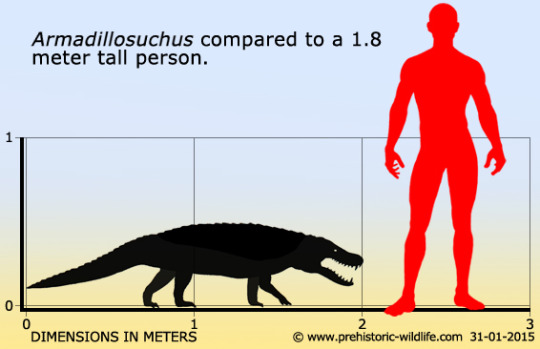
He’s related to the Crocodile family and here’s him next to some other Ancient Crocs

beautiful boy

He digs holes
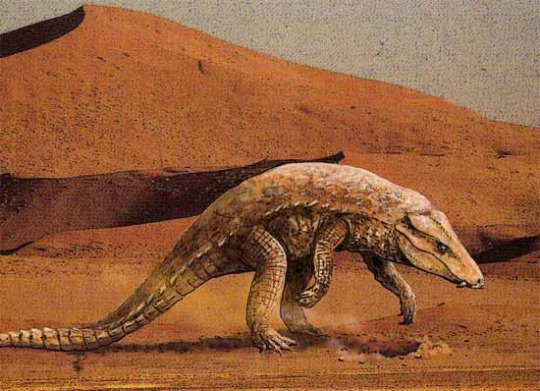
dig
Anyways I love my son
1K notes
·
View notes
Text

#Dinovember/#Archovember Day 23: Armadillosuchus
Okay so you’ve heard of Pug Croc but now... have you heard of ARMADILLO CROC??
I can’t believe we’ve made it to the last pseudosuchian on my list. (I am a little disappointed I forgot to make room for Desmatosuchus, but maybe next year 😅) I was nervous about drawing these guys as I’ve never drawn them before, but I actually found them to be the most fun to do! I am glad we still get to share the world with a few members of this super diverse group.
#my art#armadillosuchus#armadillosuchus arrudai#archovember#dinovember#dinovember 2019#draw dinovember#draw dinovember 2019#pseudosuchians#archosaurs
8 notes
·
View notes
Photo
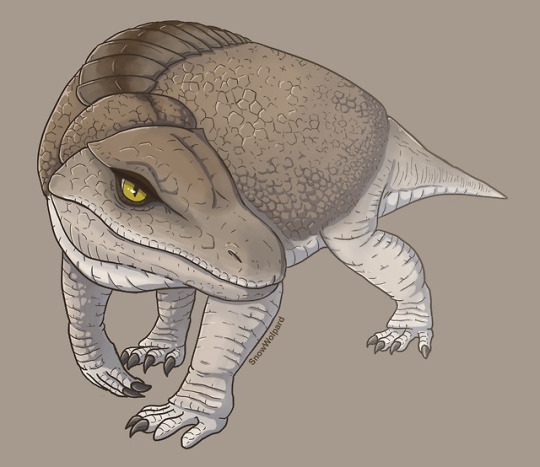
Armadillosuchus arrudai
Armadillosuchus is a genus of Pseudosuchian (crocodile relative) that lived during the late Cretaceous of Brazil. It’s name means “Armadillo crocodile”, in reference to the Armadillo-like armor on it’s back.
165 notes
·
View notes
Photo

this was supposed to be just a colored sketch but then it turned into lighting and background practice
36 notes
·
View notes
Video
youtube
Armadillos are some of my favorite mammals because they look reptilian. Imagine a cross between the two!
#armadillosuchus#crocodiles#crocodylomorph#paleontology#fossils#south america#adamantina formation#cretaceous#armadillo
1 note
·
View note
Photo

This Armadillosuchus is my 500th post!
166 notes
·
View notes
Video
youtube
Paleo Profile - Armadillosuchus
ARMADILLO CROCODILE!
ARMADILLO CROCODILE!
ARMADILLO CROCODILE!
2 notes
·
View notes
Video
youtube
Crocodilomorphs are awesome.
7 notes
·
View notes
Text
Indosinosuchus the freshwater Teleosaur
Ignoring the fact that I skipped out on posting about my recent deepdives on Armadillosuchus and Odobenocetops (besides that one figure I made) on Tumblr, let me catch up by talking about Indosinosuchus.

Indosinosuchus (Indochinese Crocodile, after the Indochinese Tectonic Block) is a type of teleosaurid from the Late Jurassic Phu Kradung Formation of China. First of all the Phu Kradung is a fascinating formation with a long and somewhat convoluted dating history. For quite some time researchers argued whether or not its Late Jurassic (based on fauna) or Early Cretaceous (based on pollen). Recent papers seem to argue that both can be true, with the lower parts being Jurassic and the upper Cretaceous, which also accounts for a faunal turnover visible throughout the record. Related to Indosinosuchus, we have classically Jurassic teleosaurs in the lower levels and pholidosaurids in the upper.
artwork by Kmonvish Lawan and Sakka Weerataweemat


Whats far more interesting however is that the Phu Kradung Formation is continental in nature, preserving floodplanes dominated by lakes and rivers. This is quite the unusual habitat for a teleosaur, which are traditionally marine animals, living in the coastal or even open waters of the Tethys. In fact the only other known example of a freshwater teleosaur is an unnamed animal from China that sometimes clades closely to Indosinosuchus.
Indosinosuchus is known from a total of 10 fossil individuals, largely consistsing of skulls and mandibles with the occasional postcrania, which were all found in a single locality and have been determined to represent at least two different species: I. potamosiamensis (Thai River Indochinese Crocodile) and I. kalasinensis (Indochinese Crocodile from the Kala Province).

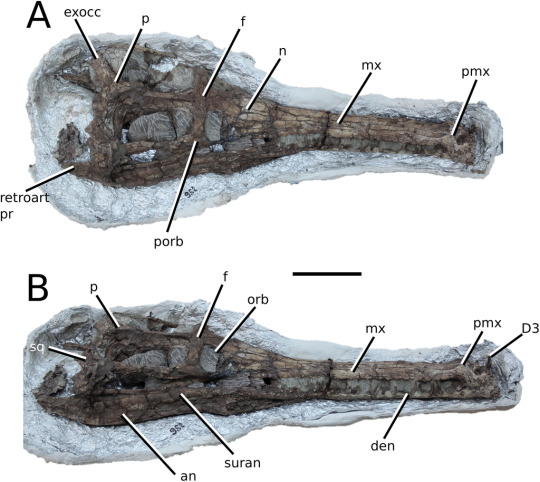
Now overall, Indosinosuchus had a pretty long and narrow snout compared to most modern crocodilians. However, among teleosaurs, this animal was actually among the more robust genera. Even more so when you consider that within teleosaurs, it falls within the teleosaurid family, not the overall more robust machimosaurids that would eventually become durophages and macropredators, cracking turtle shells.
Analysing the biomechanics of Indosinosuchus did show some cool things. The snout was pretty average at resisting stress and force, at least for teleosaurs, but the bite force was respectably high. The force that could be transferred to the tip of the snout in particular is among the highest in this group and the maximum force it could excert was the single highest among all teleosaurs.
The two species however begin to differ in how fast they could close its jaws. I. potamosiamensis follows what would be expected. A teleosaur with a massive bite but only closing its jaws slowly as in teleosaurs with similar mechanical advantage values. I. kalasinesis however could close its jaws surprisingly fast, something you'd otherwise expect from animals with a much lower bite force that needed to strike a lot more swiftly in order to catch prey.
While we don't quite know the precise ecology of the two species, scientists could deduce a few things. For one, obviously the difference in the jaw closing/opening speed is a good sign that they had somewhat different lifestyles, which could explain why two so similar species coexisted at the same time in the same place. Secondly, although its bite force was notably high, it does not appear like Indosinosuchus went after especially large prey. Sure, it could bite hard and had a relatively robust rostrum, but its teeth were not particularily specialised like in Machimosaurus. So it has been suggested that it was a generalist, not a specialist as shown in this figure by Johnson, Young and Brusatte.
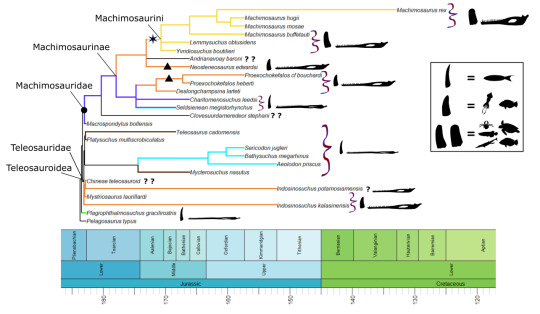
Last but certainly not least is the way these animals died. It does seem rather odd that 10 specimens all seemingly died in the same place at the same time, with most preserving the skull and not much else. Well there may be a reason. One clue stems from the most complete non-skull we have, which is a remarkably well preserved spinal column preserved in articulation, but missing the skull. So the idea is that the carcass may have floated in rather still waters (like an oxbow lake) and the weight of the head would eventually separate the two pieces. The spine must have been burried rather quickly afterwards so that it wouldn't just fall apart. Well the hypothesis continues that this could have been during a drought, when water levels were gradually receeding. We know that modern crocodiles will amass in great numbers during droughts until bodies of waters are nothing but mud and crocs, so it makes sense here. The full drying out of their sanctuary would then contribute to preservation and we even have evidence that they spend a minimum of 8 weeks in the dry thanks to the feeding traces of scavenging beetle larvae.
There is also a second hypothesis that suggests that the bodies may have been washed on land during a flashflood, but I personally think the drought hypothesis is a lot more interesting. Plus I managed to get @knuppitalism-with-ue to draw something akin to the later, with an unfortunate group of Indosinosuchus being stuck in a dried up lakebed as a local mamenchisaur approaches in the search for water.
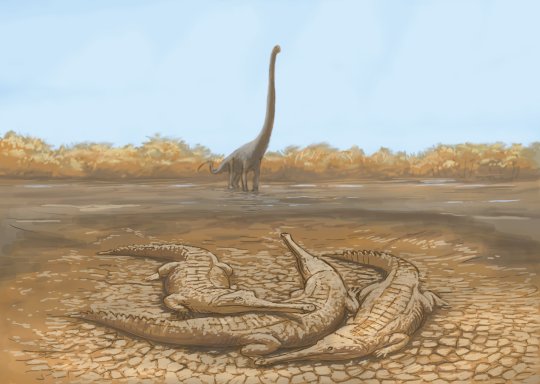
Obligatory link to the Wikipedia page post-overhaul: Indosinosuchus - Wikipedia
and the before and after, wondering if I should do the same with Armadillosuchus and Odobenocetops or if I should just come back once I got the next project done (Doratodon)
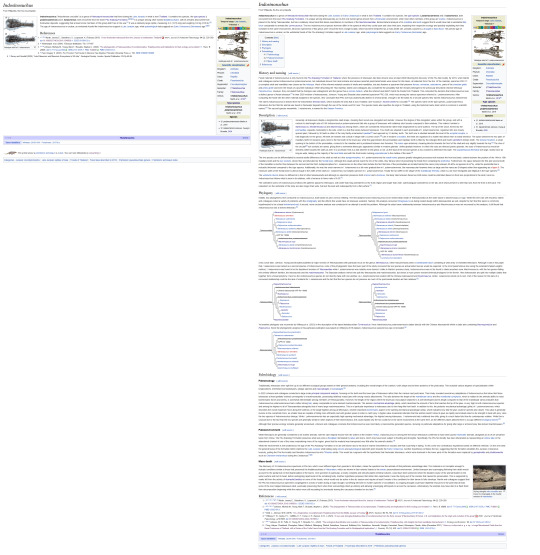
#indosinosuchus#palaeoblr#paleontology#teleosauroidea#teleosauridae#phu kradung formation#jurassic#crocodile#wikipedia editing#prehistory
32 notes
·
View notes
Text
Me talking about 🦎crocodilians🐊

Just got back from the St. Augustine zoo and had a phenomenal time! As someone who much perfers reptiles(including birds) over mammals, getting to go to a very well maintained park where reptiles are the main focus was a joy. I took loads of pictures that I may or may not post here but since I'm obsessed with prehistoric life this photo I took of their Sarcosuchus skull replica is what I'll show off for now. Plus, Sarcosuchus was one of the largest crocodilimorphs to ever live, so it fits in with a G/t blog 😅.
While it's not an actual fossil and not to scale (the real animal could fit a six foot tall person in its mouth) this cast is still impressive to look at. The animal would have lived in Cretaceous North Africa along side dinosaurs like Ouranosaurus, Lurdusaurua, Nigersaurus, and Suchomimus. While it may have dwelt with these massive animals it was likely a fish eater, since its slim snout is akin to the modern Gharial who itself is a specialized pescivore. Nevertheless it would have been a formidable creature in life and would most certainly not pass up the opportunity to hunt large dinosaurs, even if it didn't do this as regularly as its North American counterpart Deinosuchus. Interestingly, Sarcosuchus isn't actually closely related to modern crodilians! It's a distant relative that split off from the true crodilians in the early Cretaceous that convergently evolved many traditional crocodilian traits. Back in the Mesozoic and even early Cenozoic, the broader crocodilimorph family was insanely diverse, with animals like Armadillosuchus and Simosuchs diverging heavily from the semi aquatic super predator we often think of. As late as the Paleogene epoch their were land dwelling crocodilimorphs that had adapted hoof like feet to better run down early horses. So yeah, your welcome for giving you that kinda terrifying image XD
Anyways yeah that concludes my little shitpost about the Sarcosuchus skull at the St. Augustine zoo XD I hope you liked it and maybe learned something? UwU💖💕
4 notes
·
View notes
Text
MY SON
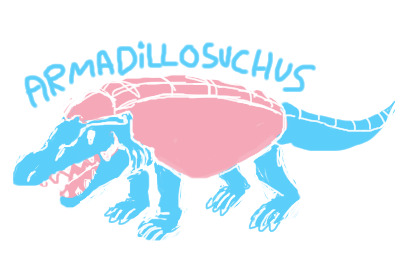
12 notes
·
View notes
Note
have U seen armadillosuchus. armadillo crocodile
LOL i have but i love looking at that freak <3 thank u
1 note
·
View note
Note
Why are aptonoth and apceros classified as parasaurolophus and ankylosaurus even though they don’t really resemble their inspiration all that much?
Before I answer, I’m gonna preface this by saying that I’m way more familiar with saurischians than I am with ornithischians. That statement also comes with the massive qualifier that I have to use morphology-based taxonomy to classify everything, which, as any scientist worth their salt will tell you, is really bad. Thankfully, though, we can make it work.
Let’s start with the aptonoth. Instead of using a render or screenshot from the latest game, I want to show you something else.

Left to right: Concept art for the felyne, ioprey, aptonoth, anteka, mosswine, and popo from Monster Hunter Illustrations (モンスターハンターイラストレーションズ, カプコンオフィシャルブックス) | Source: Monster Hunter Wiki contributor user:BurnZ.
Cool, right? I’ve always been a sucker for behind-the-scenes content, and this concept art scratches that itch pretty nicely. But the reason why I dredged this from the bottom of the muck is because it gives us a pretty unobstructed look at the aptonoth’s design, and more specifically, what the developers intended for that design.
A common debate among paleontologists is whether or not species in the genera Parasaurolophus and Charonosaurus had skin frills. This hypothetical structure would have extended between the top of the crest to an anchorage point on either the neck or the top of the back. It’s speculated that the crest might have been used for intraspecific communication, as both a sexual selection tool and a way for members of a group to ID individuals. There are plenty of paleoartists that choose to either include or omit the skin frill when trying to envision what these creatures looked like.


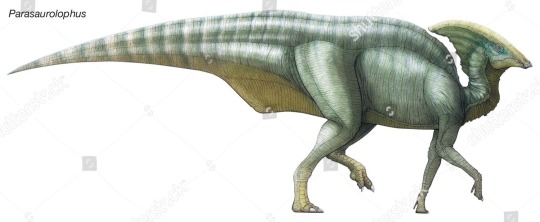
(1) Top: Paleoartist’s interpretation of Parasaurolophus and Charonosaurus without frills. | Source: Gabriel Ugueto. (2) Middle: Paleoartist’s interpretation of Charonosaurus with a frill. | Source: Wikipedia contributor user:Debivort. (3) Bottom: Paleoartist’s interpretation of Parasaurolophus with a more prominent, exaggerated frill. | Source: Stock image by Encyclopaedia Britannica.
Look familiar?
You could argue that the aptonoth’s body structure looking similar to a hadrosaur’s is just a coincidence/artistic choice/whatever, but I think that Capcom’s choice to include that hypothetical crest feature early on is a very deliberate way of acknowledging the frill debate in the paleo community.
As for the apceros? Well, let’s take a quick look at its MHW render.
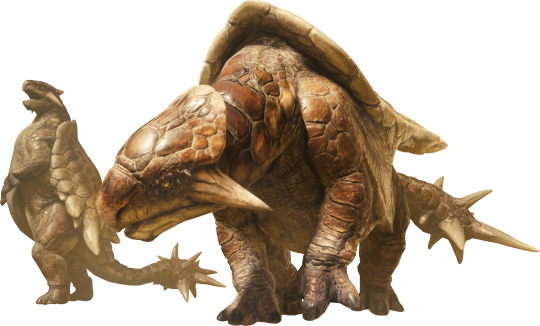
In-game render for the apceros from Monster Hunter: World. | Source: Monster Hunter Wiki contributor user:Kogath.
Right off the bat, we’re limited in what we can ascertain about the apceros because we can’t directly view its skeleton. This means we can’t see features such as the scale-like pattern on the skull surface (the caputegulae), or the amphicoelous centra on the caudal vertebrae. We can, however, extrapolate a few things based on what we can see.
Some of the ankylosaur traits that apceros does have are the sideways-facing nostrils, disproportionately long hindlimbs (compared to forelimbs), three toes on the hindlimbs, a singular cranial horn (unlike Ankylosaurus’ two cranial horns), a beaked jaw, and a club-shaped tail (we’ll get to the spikes in a second).
There are, however, a few traits that apceros is missing: a second cranial horn (that’s backwards-facing as opposed to downward-facing), phylliform (leaf-shaped) teeth, and osteoderms arranged in lines (as opposed to the shell-like configuration).
So if apceros is missing these traits, why would I classify it in the genus Ankylosaurus, instead of putting it in a new genus?
To be honest, the thought had occurred to me at the time. Back when I started this project in—holy shit, 2015, that was five years ago—I wasn’t as informed on the topic as I am now. Being a college student at the time, I think my approach was more along the lines of, “I have midterms, I don’t have the time to create an entirely new fictional genus just for a hobby that’ll never see the light of day. Fuck it, I’m just gonna throw it in the same genus as the type species.” I had something of a well if it ain’t broke mentality back then (along with other priorities).
To give past-me some credit, I think that motto actually paid off in this case. A lot of the contentious traits that call apceros’ placement into question can actually be explained if you consider those traits modifications or loss of the ancestral condition. Take cetaceans for example: despite being classified as mammals (which are characterized by hair), whales, dolphins, and porpoises have virtually none. And yet we still classify them as mammals because this trait was found earlier in their lineage. You could probably get away with applying that reasoning to the apceros:
The teeth: Loss of dentition isn’t unheard of. Modern birds no longer have them despite being present in their ancestors (along with all of their close relatives, the non-avian dinosaurs). You could argue that apceros lost its dentition for whatever reason, and instead developed ridged/serrated tomia on their beak for handling vegetation (not unlike those seen in geese).
The armor: If apceros’ armor was once more similar to Ankylosaurus’, then perhaps the osteoderms became highly fused. Armadillosuchus arrudai is a good example of an organism that developed a similar shell-like structure for defense against predators. In a case of convergent evolution, perhaps apceros rapidly gained a similar cervical shell.
The tail: Clubbing predators is all well and good, but as stegosaurians have repeatedly proved throughout the fossil record, thagomizers are the way to go. If you look at the apceros’ tail, you can see osteoderms more akin to traditional bony deposits unlike the fused ones on its back. I don’t think it would be too much of a stretch to postulate that these osteoderms gave rise to dermal spikes. I’m not sure what selection pressures would specifically lead to the acquisition of a thagomizer, but if the existence of thirteen stegosaurian genera that persisted over 44 million years is anything to go by, it must’ve been relevant.
TL;DR: The apceros (Ankylosaurus therianopla) probably belongs in the same genus as the type species A. magniventris because it shares the majority of its characteristics. Any characteristics that are missing could be attributed to a rapid loss of, or change to, any of the aforementioned features. If someone who’s much more educated on ornithischian evolution came along and offered compelling evidence for why apceros should be in its own genus (or hell, its own family), I wouldn’t have any qualms with reclassifying it. As it is, I’m fine with apceros’ current placement.
#asks#iamthekaijuking#taxonomy#diagram#ankylosaurs#hadrosaurs#ornithischians#aptonoth#apceros#hopefully that answers your question :)
6 notes
·
View notes